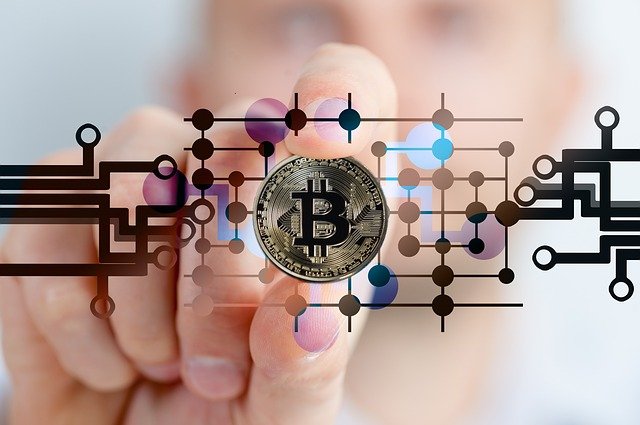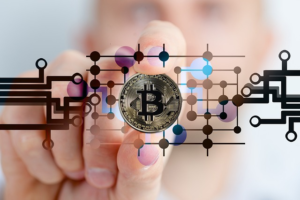Slow Rug Pulls: The Wild Nature of Cryptocurrency Projects – hackernoon.com
A rug pull event takes place when a virtual asset developer manipulates a token’s worth, making it look more lucrative than it is. After that, the developer abandons the project, taking investor funds with them. Rug pulls accounted for almost 40% of all crypto scams that took place in the last year that totaled $7.7B. Crypto veterans often encourage people to DYOR(do your research), but what ex…….

A rug pull event takes place when a virtual asset developer manipulates a token’s worth, making it look more lucrative than it is. After that, the developer abandons the project, taking investor funds with them. Rug pulls accounted for almost 40% of all crypto scams that took place in the last year that totaled $7.7B. Crypto veterans often encourage people to DYOR(do your research), but what exactly does that mean, and what should one do to avoid getting scammed?
Crypto Adventure
The best spot for an intriguing adventure to everything crypto.
The decentralized finance (Defi) and cryptocurrency industry has witnessed its fair share of scammers, seeing that over $2B was lost from rug pull events in 2021, according to data tracker Chainalysis. Out of all crypto scams that took place that year that totaled $7.7B, rug pulls accounted for almost 40%. The scamming event takes place when a virtual asset developer manipulates a token’s worth, making it look more lucrative than it is. After that, the developer abandons the project, taking investor funds with them.
However, crypto enthusiasts can avoid the occurrence of rug pulls, but it could be harder than many think. Crypto veterans often encourage people to DYOR(do your research), but what exactly does that mean, and what should one do to avoid getting scammed?
How a Rug Pull Happens
A developer creates a cryptocurrency or Defi project and makes it appear very lucrative to investors. Once investors have allocated enough capital to the project, the developer may cash out and abandon the project.
Generally, rug pull projects are those crypto projects whose developers have put little effort into them. They are operated by people whose primary goal is to defraud investors of their money. They could accomplish their plans within days or months, depending on how well planned the scam architecture is manufactured. Additionally, the assets within these projects may look slightly similar to other cryptocurrencies within the market.
Different types of Rug Pull
Liquidity Stealing
To make a cryptocurrency tradeable, developers need to create a liquidity pool that holds an amount of the currency to allow investors to buy and sell. Judging from most rug pull events, the developer brings about a liquidity pool, where investors can lock the project’s newly minted token and another legitimate cryptocurrency, we could say Ether.
As the scam crypto’s value increases, investors start buying in the asset, exchanging it with their ETH, which remains locked up in the liquidity pool for a defined period. Investors then continue buying the token, which could help it increase in value. Subsequently, more ETH is poured into the liquidity pool.
At the time of the choosing, the malicious developer will pull the ETH from the liquidity pool, leaving just the worthless token instead. Investors cannot trade back their now-worthless tokens while the developer takes his money in legit ETH and makes a run for it.
Disabling the ability to sell tokens
The result of this scam is almost the same as liquidity stealing, but the process is different. In this scam, the developer adds a bit of code that will make investors unable to sell their coins back to the exchange.
Investors can buy the scam coin, but only the developer can sell his coins because of the fraudulent piece of code. As the price rises to the point where people start trying to cash in to sell their coins, they realize they can’t sell the asset. At some point, the scammer will deem the price high enough, and he will sell all his scam tokens, running away with the value of the investments that had been poured into it.
Developers cashing out
The cash-out doesn’t sound like a scam in a free market, but it qualifies as one of the projects is created for this sole purpose. Like the previous two scams, the malicious developer starts a project with an overblown value proposition. The promise usually involves a token feature or platform in development and will be released soon.
But in reality, the developer mints or creates a worthless token, giving himself a large part of these tokens from the beginning or buying them in the market at a low cost. As the promise of the revolutionary product makes investors buy the worthless tokens and the price goes up, the developer cashes out all his shares. He can do this all at once or over time, so the rug pull isn’t as obvious. Either way, investors will be left with the worthless token while seeing their investment funds erased.
Rug pulls in Crypto History
OneCoin
OneCoin was essentially a gigantic Ponzi scheme that is now known as the most significant crypto scam to date — stealing an estimated US$25 billion from investors. While authorities cracked down on OneCoin and arrested its leaders in 2017, some of its founders disappeared, and the scam is still going on. And the worst part is that this Ponzi scheme never even had a cryptocurrency from the get-go.
BitClub Network
BitClub Network is known as one of the biggest cryptocurrency Ponzi schemes. The platform utilized marketing advocates and questionable marketing tactics to attract capital. According to its planned out slogan, investors would reap guaranteed profits from their bitcoin mining hassle. The founders of the scam pulled an estimated US$722 million from investors in December 2019.
Squid Game Token
The Squid Game token was a recent high-profile rug pull, capitalizing on the hype around the hit Netflix series “Squid Game.” SQUID’s price surged over 230,000% in a matter of weeks, and afterward, investors could not sell their tokens. On Nov. 1, 2021, the developers made away with about US$3.4 million from investors, and the token crumbled down from US$2,861 to US$0.01 in a record five minutes.
How to Avoid Rug Pulls
Now that you know the most important signs of a rug pull let’s break down some of the best practices you can apply to your crypto research to avoid such scams.
Online tools can help detect a rug pull, and Token Sniffer is one of them. Token Sniffer notes down all hacks and scam coins, so every project it lists is a rug pull.
Rug Doctor, a tool used to analyze crypto projects, goes through the code of conduct for newly launched projects, highlighting rug-pull strategies. Once Rug Doctor finds a high-risk token or Defi project, it lists it on its website, adding a risk score and breaking down the red flags found in the project.
Blockchain explorers like Etherscan or Binance Smart Chain explorer can detect high-level scam operations. One can search for the token address of a cryptocurrency, prompting a token tracker page to appear. The tracker will display the total supply, number of real holders, and transfers, and interested parties can see the wallets holding large amounts of the token.
Moreover, interested parties can also look at the project’s journey before it launches any sales and ensure that they have undergone security auditing from reliable platforms such as Solid proof.
However, for new cryptocurrencies, if the top 10 wallets hold more than 20% of the token, or worse, a large percentage of the pass is stored in a single wallet, then this is a dangerous sign of a potential rug pull. If one or more of the ‘whale’ wallets cash out on all of their investments in the form of an exit scam, the crypto’s value steeply declines.
Bottom line
The names of these scams may be similar to legitimate cryptocurrencies. As the blockchain industry grows more prominent, rug pulls are becoming more common in crypto and Defi, while scams have also started plaguing the NFT space. But with careful research and looking for obvious signs, investors can avoid them.
Tags
Related Stories
Source: https://hackernoon.com/slow-rug-pulls-the-wild-nature-of-cryptocurrency-projects







